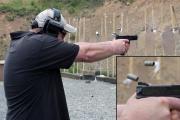Lets get a discussion going about basic carbine knowledge.
For the purposes of this thread, let us assume the end user is a guy like me -- a little rifle experience, but a novice when it comes to the modern defensive carbine. The owner wants to use the rifle for everything carbine related. Specifically, carbine classes, and home defense. Remember, this is a basic thread, so assume no SBRs or Suppressors for now; further assume one rifle for everything. Also, assume we are working with a good quality, correctly assembled gun, like a Colt, or Daniel Defense, etc.
Naturally, the above hardly all inclusive, but it is certainly a start. Ask more questions! The long gun knowledge available here is something to be taken advantage of, and I think it is sometimes overlooked.
- Is there an 'establishing reliability/function' period with a carbine like there is with a pistol (500 FMJs and 200 service rounds)?
- A good zero is vital to rifle shooting -- whats the best option for a general use carbine (16 inch, irons/1x red dot), and how do we get there?
- I get the idea that less really is more when first learning your rifle, especially coming in as green as I am. I.E. don't hang $2000 worth of modifications on your rifle before you've got the basics down, which is solid, but what does one absolutely need on the rifle to get the most out of it? Sling? Redi-Mag? Light?
- DocGKR provides excellent data on duty/defense ammo selection, but what about zero with defense vs. practice ammo? do you set two zeros? Zero for the defensive ammo, and adjust hold during training? Find a training/defense combo with the same POA/POI?
- What about optics? Is there still merit to the 'irons first' mantra, or has that given way to the prevalence of the RDS?




 Reply With Quote
Reply With Quote





